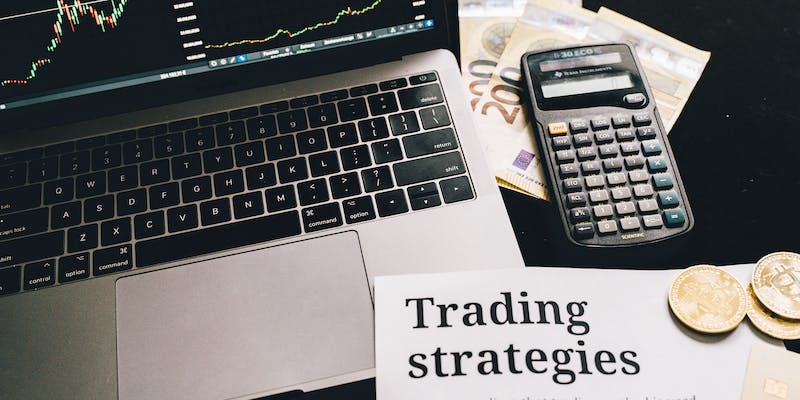
Decoding Consumer Surplus: A Practical Guide to Understanding, Measuring, and Applying
Dec 29, 2023 By Triston Martin
Welcome to the intriguing realm of consumer surplus, a place where your wallet rejoices, and satisfaction is the reigning currency. Picture the exhilaration of securing a bargain, paying less than what you're willing to for that much-desired item. This is consumer surplus at work, an economic concept that encapsulates the delightful difference between what you're ready to pay and what you actually end up paying. In this engaging discourse, we'll demystify the concept of consumer surplus, delve into the methods economists employ to measure this phenomenon and anchor our comprehension with a relatable real-world example. Brace yourself for a straightforward exploration of economic gratification!
Defining Consumer Surplus
Understanding consumer surplus becomes straightforward when we eliminate the use of technical language. Imagine you're at a flea market eyeing a vintage record player. You're willing to pay $100 for it, but the seller agrees to let it go for $80. Voila! You just experienced consumer surplus – the difference between what you were willing to pay ($100) and what you actually paid ($80).
In economic terms, consumer surplus is the area between the demand curve (your willingness to pay) and the price you actually pay. It's the monetary bonus you get for finding a good deal, making that purchase even more satisfying.
In Layman's Terms:
Let's dive deeper into the concept of consumer surplus without drowning in complexity. Consumer surplus, in essence, is the monetary bonus you get for finding a good deal. It's the joyous feeling of paying less than your maximum budget, making your purchase even more satisfying. We will delve deeper into this idea, ensuring that the minimalist approach maintains accessibility for all.
Measuring Consumer Surplus
Now, let's tackle the nitty-gritty of measuring consumer surplus. Economists use a tool called the demand curve, a graphical representation of the quantity of a good or service that consumers are willing to buy at different prices. The consumer surplus is the triangular area between the demand curve and the price level.
To calculate this, economists use a simple formula: Consumer Surplus = Willingness to Pay - Actual Payment. However, in the real world, measuring consumer surplus precisely can be tricky. It involves sophisticated statistical methods and mathematical models.

Understanding consumer behavior:
Understanding consumer behavior is indeed crucial for the accurate measurement of consumer surplus. The value that consumers place on a product directly influences the consumer surplus. The higher the perceived value, the greater the consumer surplus.
However, this Surplus is not static and can fluctuate based on market conditions. For instance, if there's a sudden surge in demand leading to an increase in prices, the consumer surplus tends to shrink. This is because consumers are now paying closer to what they're willing to pay, reducing the Surplus.
Conversely, if prices fall due to an increase in supply or a decrease in demand, the consumer surplus expands. This is because consumers are paying less than what they're willing to pay, increasing the Surplus. Thus, consumer surplus is a dynamic concept, constantly changing with market conditions.
Real-World Example
Let's bring this to life with a real-world example. Consider the smartphone market. You're eyeing the latest model, willing to pay $800 for all its cutting-edge features. A holiday sale slashes the price to $600. Hallelujah! Your consumer surplus in this scenario is $200 – the difference between what you were prepared to pay and the discounted price.
Now, imagine the entire market scenario. If the smartphone manufacturer suddenly introduces a budget-friendly model that caters to a broader audience, the overall consumer surplus for the entire market expands. More people can afford smartphones, and their satisfaction levels soar as they snag a great deal.
This example also highlights the impact of competition on consumer surplus. When multiple companies compete to offer the best prices and features, consumers benefit from increased options and lower prices, contributing to a larger overall consumer surplus.
Challenges in Measurement
The concept of consumer surplus, which represents the difference between what consumers are willing to pay and what they actually pay, is indeed fascinating. However, accurately quantifying this Surplus presents a multitude of challenges.
One of the primary difficulties lies in predicting consumer behavior. A variety of factors influence consumers, and their purchasing decisions can often seem unpredictable. Additionally, external factors such as inflation can significantly impact the consumer surplus, adding another layer of complexity to its measurement.

Navigating the ever-changing landscape of market dynamics is another challenge. Markets are not static; they evolve and change, often rapidly, in response to numerous factors. This dynamic nature of markets makes the task of measuring consumer surplus even more daunting. Furthermore, consumer preferences and the value they perceive in products or services are highly subjective.
This subjectivity makes it difficult to accurately quantify their willingness to pay, a key component in calculating consumer surplus. Economists often resort to using surveys, historical data, and mathematical models in an attempt to overcome these challenges. However, the constantly evolving nature of markets means they must always be ready to adapt their methods and assumptions.
Conclusion
In conclusion, consumer surplus is the unsung hero of economic transactions. It's the joy of getting more than you expected, the thrill of finding a bargain, and the essence of a satisfied consumer. While measuring it may involve some complexity, the fundamental idea is simple. As we navigate the vast landscape of consumer surplus, remember that it's not just about the individual buyer.
It's a collective experience that influences market dynamics, competition, and overall economic well-being. So, the next time you snag a great deal, take a moment to appreciate the magic of consumer surplus – where economic theory meets real-world satisfaction. Hope you found this info worth reading.
-
 Investment May 12, 2024
Investment May 12, 2024Are these the best mental health stocks?
Insights into the mental health sector and how to invest in stocks of companies that focus on mental health services and technologies.
-
 Investment Jul 31, 2024
Investment Jul 31, 2024FarmTogether: Diversify Your Portfolio with FarmTogether Investments
Investors diversify their portfolio with FarmTogether agricultural investments and aim for long-term profitability in agriculture.
-
 Investment Jan 13, 2024
Investment Jan 13, 2024A Guide To Forex Trading - Tips and Strategies For Online Investment
Discover how to become a successful trader in the Forex market with our practical guide. Learn how to set up your account and develop a trading plan.
-
 Banking Feb 20, 2024
Banking Feb 20, 2024Low-Rate Savings Account Alternatives
Are you getting the best return on your savings? Find out what alternatives to low-rate savings accounts are available and how to maximize your earnings.